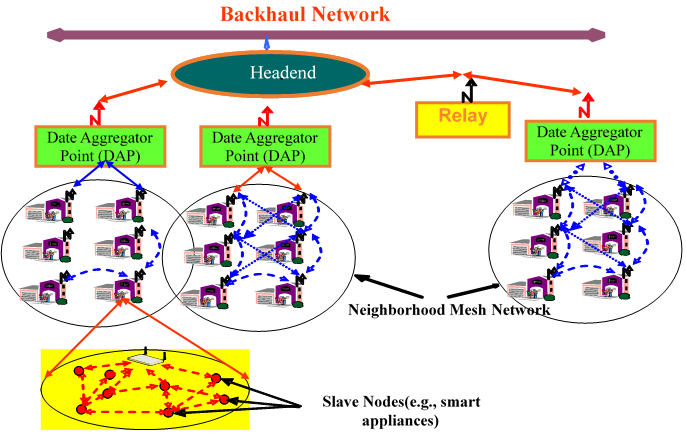Summary
It is well accepted that the Smart Grid will employ a variety of networking technologies. Among them are wireless mesh networks, which are vastly favored over long-range single-hop wireless links due to their multi-hop structure. Although there has been tremendous advancement in networking technologies, from an architectural point of view those for smart grid applications need to be designed to ensure a high degree of reliability, self-configuration, self-healing, and low-latency. To meet these requirements, in this project a multi-gate network architecture with a novel distributed packet scheduling technique has been introduced. The main feature of traffic scheduling is maintaining low latency, which remains flat regardless of the number of transmission hops. Because of this important feature the scheduling technique is used to deal with the time-varying traffic generated under outage conditions.
Description
The smart grid is comprised of many networks (domains) with various boundaries that have to be interconnected to provide end-to-end services. The challenge is to design network architectures that can meet the interoperability requirements for inter-domain and intra-domain communications, as specified in the NIST conceptual reference model [1]. Such networks, according to the Energy Independence and Security Act of 2007, should provide secure and reliable end-to-end two-way communications. In this respect, one of the most important challenges is to provide a reliable last mile communication that covers the connectivity from the meters to the advanced metering infrastructure (AMI) head-end. The design of such a network, which may consist of the neighborhood area network (NAN) and home area network (HAN), depends not only on the application layer requirement, but also on the nature of its medium access control (MAC) and physical (PHY) layer. There are a number of diverse communications technologies and standards that can be deployed for NAN.
The main objective in this project has been to develop a flexible wireless multi-gate networking architecture for smart grid last mile communication. An important feature of this network is that all meter nodes have a separate path to each gateway. To exploit this feature a packet scheduling technique that can allow traffic flow to/from meters to the head-end though a dynamically selected gateway has been designed. The selection depends on how the traffic load is distributed amongst neighboring gateways. Therefore, the most significant contribution of this project is the development of a novel backpressure-based packet-scheduling scheme capable of balancing the traffic load amongst the gateways.

Major Accomplishments
The outcome of these investigations has been published.

